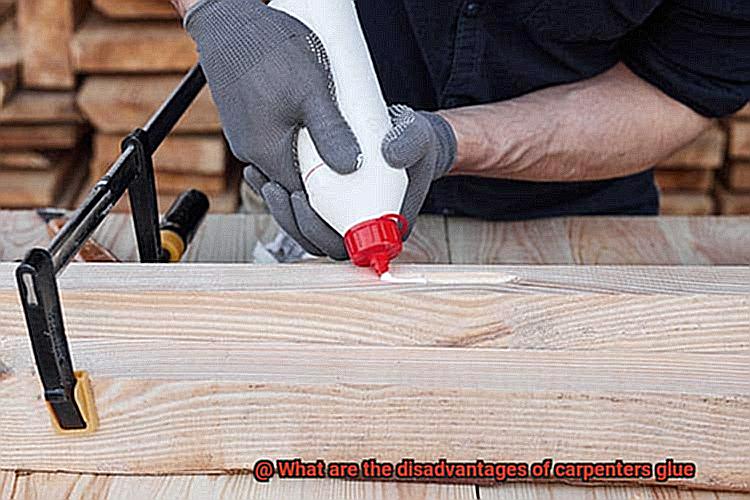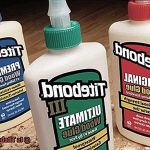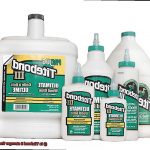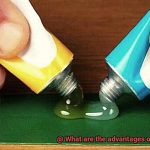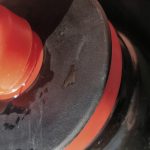It’s like the superhero of materials, with its incredible adhesive powers and protective qualities. No wonder it’s so popular in various industries. But hold on a minute – before we get too carried away singing its praises, let’s take a step back and acknowledge that even our beloved epoxy has its limitations and downsides. In this blog post, we’re going to dive into the not-so-perfect aspects of epoxy, shining a light on the challenges you might face when working with this stuff.
Sure, epoxy has some serious perks – it’s durable, resistant to chemicals, and easy to apply. But don’t be fooled: there are some drawbacks you need to know about too. By exploring these downsides, we can make smart choices when it comes to selecting materials for our projects and ensure we get the best possible results. So buckle up as we uncover the hidden complexities of epoxy that deserve our attention. Let’s get started.
Working Time Limitations
Contents

In this comprehensive guide, we will explore the intricacies of epoxy’s clock, uncovering the hurdles it presents to users. So, if you’re ready to dive into the fascinating realm of epoxy, buckle up and prepare to conquer its challenges.
The Clock is Ticking: A Race Against Time
Epoxy’s working time typically ranges from 20 to 30 minutes, influenced by factors like temperature and humidity. This limited timeframe poses a challenge for intricate or large-scale projects that require ample time for application, positioning, and adjustments. To overcome this hurdle, meticulous planning and efficient execution are your secret weapons.
A Smooth Finish: The Battle of Malleability
As epoxy begins to harden, its malleability decreases, making it harder to spread evenly. Achieving a smooth finish can be daunting, especially for beginners or inexperienced users. Uneven surfaces and visible brush strokes lurk as common pitfalls in the face of epoxy’s hardening clock.
Precise Alignment: Timing is Everything
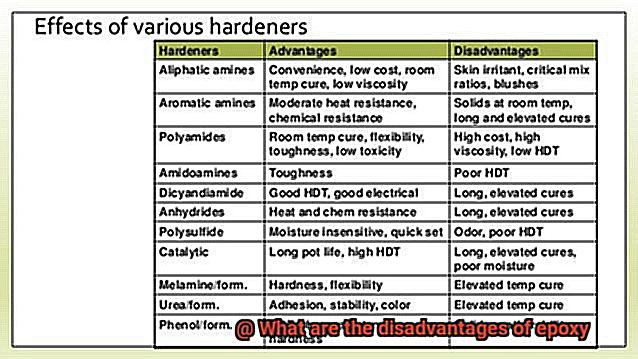
When working with multiple components or intricate designs, precise alignment is crucial. Unfortunately, epoxy’s limited working time adds an extra layer of complexity. Before the epoxy sets, users must position the pieces correctly, requiring meticulous attention to detail. Delicate parts demand laser-sharp focus for impeccable alignment.
Mixing Larger Quantities: A Balancing Act
For larger projects, mixing larger quantities of epoxy is inevitable. However, this poses a risk of premature curing due to the heat generated during mixing. Striking a balance between thorough mixing and staying within the working time limitations becomes paramount. Failure to do so could result in wasted material and compromised bonding strength.
Conclusion:
Epoxy’s working time limitations test your mettle, but armed with knowledge and careful planning, victory is within reach. Embrace the adventure and let epoxy work its magic, one project at a time.
Sensitivity to Temperature and Humidity Variations
Get ready for a thrilling ride filled with excitement, challenges, and the quest for the perfect bond. Today, we’re going to delve into one of the most significant hurdles that epoxy adhesives face – their sensitivity to temperature and humidity variations.
Epoxy adhesives are renowned for their incredible strength and durability. They possess the power to bond almost anything together, creating a connection that seems unbreakable. However, like any superhero, epoxy adhesives have their weaknesses. One of them is their vulnerability to the dynamic duo of temperature and humidity – a pair that can throw a wrench into your bonding adventures.
Let’s begin with temperature. Epoxy adhesives have a recommended temperature range for application and curing. If you find yourself outside this range, things can get messy. In cold temperatures, epoxy becomes less viscous, making it challenging to work with and potentially compromising the bond strength. On the flip side, high temperatures can cause the epoxy to cure too quickly, leaving you with limited time to apply it before it hardens.
Now, let’s dive into the realm of humidity. Moisture in the air can wreak havoc on your epoxy bond. When moisture reacts with the epoxy resin, it creates an undesirable effect called “blushing.” Imagine a surface covered in a milky or whitish appearance – not exactly the aesthetic you were aiming for, right? Not only does blushing affect the visual appeal of your project, but it can also weaken the bond itself. On top of that, high humidity levels can slow down the curing process, extending your waiting time for a fully developed bond.
So how do we overcome these challenges? It’s all about preparation and following the manufacturer’s guidelines. Make sure you use epoxy within its recommended temperature range – no sneaking outside those boundaries. If needed, you can preheat or cool the adhesive components to maintain the ideal viscosity for application.
When it comes to humidity, take control of the situation. Use dehumidifiers or other methods to control moisture levels in your workspace, minimizing the risk of blushing. And don’t forget to give your epoxy enough time to cure properly – patience is a virtue in this game. Adequate ventilation will also help remove excess moisture and create an optimal environment for a strong bond.
Some epoxy formulations are specially designed to be more tolerant of temperature and humidity variations. These superhero epoxies have enhanced resistance to blushing and can perform like champions even in extreme conditions. So make sure you choose the right epoxy formulation for your project and environmental conditions.
Strong Odor
Epoxy adhesive, known for its incredible bonding capabilities, can also unleash a pungent and chemical-like odor that can be quite off-putting. This strong odor is primarily caused by volatile organic compounds (VOCs) present in the adhesive’s composition.
During the curing process, which can last from a few hours to several days, these VOCs are released into the air, filling your workspace with an overpowering smell.
Working in an enclosed or poorly ventilated area intensifies the negative effects of epoxy’s odor. The fumes can linger, causing headaches, respiratory irritation, and even nausea or dizziness in sensitive individuals. Not exactly pleasant, right?
There are steps you can take to minimize your exposure to the odor. For starters, always work in a well-ventilated area. Open windows or use fans and exhaust systems to dissipate the fumes more quickly. It’s also crucial to wear a mask for added protection.
Reducing the intensity of the overpowering smell is another avenue to explore. Some epoxy manufacturers offer low-VOC or odorless options specifically designed to minimize the odor. While these formulations may have slightly different properties or cure times compared to standard epoxy adhesives, they are worth considering if you’re sensitive to strong smells.
Furthermore, it’s important to note that not all epoxy adhesives have equally strong odors. If you’re on the hunt for an epoxy adhesive with a milder scent, do your research. Look for user reviews or recommendations to find one that suits your needs.
Difficulty Bonding with Certain Materials
Epoxy adhesive is renowned for its unmatched bonding strength, but even this mighty glue has its limitations. Certain materials pose a significant challenge for epoxy, leaving users frustrated with its inability to adhere. In this article, we will explore the scientific reasons behind epoxy’s difficulty in bonding with specific materials and suggest alternative adhesives to overcome these challenges.
Polyethylene and Polypropylene: Plastic Predicament
Two commonly used plastics, polyethylene and polypropylene, present a formidable challenge for epoxy bonding. These materials have low surface energy, making it arduous for epoxy to establish strong bonds. Fortunately, specialized epoxy formulations explicitly designed for bonding these plastics exist, although they may not be as readily available as standard epoxy.
Slippery Slope: Tackling Teflon
Teflon, the nonstick material found in cookware and household items, poses another hurdle for epoxy bonding. Its smooth and nonporous surface creates difficulty in achieving adhesion. To overcome this challenge, it is recommended to explore alternative adhesives specifically formulated for bonding Teflon or other nonstick materials.
Metal Mayhem: Aluminum and Stainless Steel
Certain metals, particularly aluminum and stainless steel, can be problematic for epoxy bonding. These metals often have oxide layers or surface contaminants that impede adhesive effectiveness. Thorough surface preparation, such as sanding or cleaning, is crucial to enhance adhesion on metal surfaces.
Heat Resistance Matters
Temperature resistance is another crucial factor to consider when using epoxy for bonding. Epoxy tends to soften or degrade at high temperatures, compromising the strength of the bond. Thus, selecting an epoxy formulation with excellent heat resistance becomes paramount when working with materials exposed to elevated temperatures.
Not UV Resistant
Today, let’s delve into a subject that may leave you squinting under the harsh glare of the sun. We’re about to uncover epoxy’s Achilles’ heel – UV rays. That’s right, this superhero of adhesives has a fatal flaw when it comes to ultraviolet radiation. So, if you plan on using epoxy in outdoor projects or sun-soaked environments, brace yourself for what lies ahead.
Imagine this: You’ve just coated your exquisite wooden deck with a lustrous layer of epoxy. It’s a sight to behold – until the sun starts its relentless assault. Those pesky UV rays can cause your epoxy to gradually turn yellow, fade away, or even become brittle over time. Not exactly the aesthetic outcome you envisioned, is it?
But wait, there’s more. If you decide to use epoxy on surfaces like countertops or tabletops near windows, you might need an additional layer of protection in the form of a UV-resistant clear coat or sealant. Without it, you’ll be left grappling with color fading and an overall appearance that will leave you feeling underwhelmed.
Now let’s spare a thought for the artists and crafters amongst us who adore working with epoxy for their masterpieces. That vibrant artwork you painstakingly created? Well, brace yourself for some heartbreaking news – UV exposure can wreak havoc on those vivid colors, transforming them into a melancholy shadow of their former glory.
So, what’s the remedy? If your project necessitates prolonged exposure to sunlight, it’s time to explore alternative adhesives or coatings that boast better UV resistance. There are products specifically engineered to withstand the sun’s wrath, ensuring your materials retain their fresh and fabulous look.
Remember, knowledge is power when it comes to adhesive mastery (and pretty much anything else in life). So, before embarking on your next outdoor or sun-drenched venture, take a moment to contemplate epoxy’s limitations and select the perfect adhesive for your needs. Your future self will be eternally grateful.
Keep glued to this blog for more adhesive adventures. Until next time, shine on (but not too brightly on your epoxy).
Cost of Epoxy
Before you dive in, it’s important to understand the cost associated with this remarkable adhesive. While epoxy may have a higher price tag compared to other options, its benefits and long-term value can outweigh the upfront investment.
In this comprehensive guide, we will break down the various factors that contribute to the cost of epoxy, empowering you to make an informed decision that aligns with your specific needs.
Brand, Quality, and Quantity:
When it comes to epoxy, not all brands and quality levels are created equal. The cost can vary greatly depending on the brand’s reputation and the quality of the product. Higher-quality epoxy often comes with a higher price point, but it also offers superior adhesion, durability, and resistance to chemicals and UV rays.
Additionally, the quantity of epoxy needed for your project will impact the overall cost. Accurately calculating your requirements is crucial to avoid wastage or running out mid-project.
Resin and Hardener:
Epoxy is typically sold in two parts – resin and hardener. These components must be mixed together before application. The cost of each component adds up to the overall cost of epoxy.
It’s essential to check if the resin and hardener are included in the price or if they need to be purchased separately.
Preparation and Application Costs:
Achieving optimal adhesion with epoxy requires proper surface preparation. This may involve cleaning, sanding, or priming the surface. These additional preparatory steps can contribute to the overall cost of your project. Furthermore, specialized tools, equipment, or protective gear may be necessary during application, all of which should be factored into your budget.
Surface or Material Considerations:
Different surfaces or materials may require specific primers or additional preparation before applying epoxy. For example, concrete surfaces may need etching or moisture barrier coatings. These extra steps increase the overall cost but ensure a successful and long-lasting application.
Long-Term Benefits:
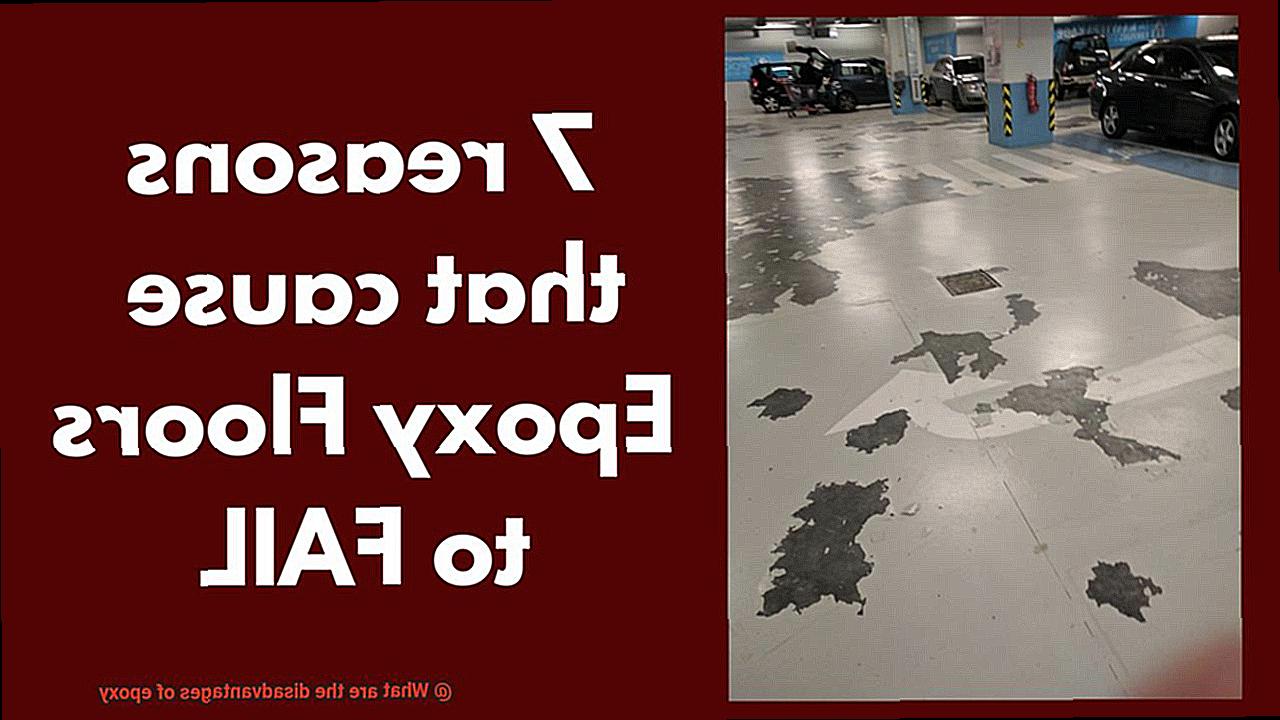
While epoxy may be more expensive upfront, it offers substantial long-term benefits that should not be overlooked. Its exceptional durability, chemical resistance, and longevity surpass those of cheaper alternatives. Investing in higher-quality epoxy can save you money in the long run by reducing the frequency of repairs or replacements.

Industrial-Grade vs. Consumer-Grade:
It’s crucial to consider the grade of epoxy suitable for your project. Industrial-grade epoxy tends to be more expensive due to its unmatched quality and superior performance capabilities. However, for less demanding applications, consumer-grade epoxy may provide a cost-effective solution without compromising on quality.
Difficulty Removing or Repairing Once Cured
Epoxy, with its strong adhesive properties and long-lasting durability, seems like the perfect choice for your latest project. But have you considered the challenges that come with removing or repairing epoxy once it has cured? Brace yourself, because I’m about to dive into the nitty-gritty of this sticky situation.
Once epoxy has fully hardened, it forms a bond that would put even the strongest adhesive to shame. It’s like trying to break free from the jaws of a tenacious predator—no easy feat. Unlike some weaker glues, epoxy doesn’t surrender easily to solvents or chemicals. So if you find yourself needing to remove cured epoxy, get ready for an uphill battle.
Traditional methods of glue removal, like using acetone or heat, may not cut it when it comes to epoxy. In fact, attempting to separate cured epoxy can often result in disastrous consequences. Picture this: you’re desperately trying to salvage a precious antique, only to watch in horror as your attempts to remove epoxy end up ruining it instead. Talk about a nightmare.
But wait, it gets even trickier. Repairing epoxy is a whole different ball game. Unlike other glues that retain some malleability or flexibility even after hardening, epoxy becomes as rigid as a steel beam. Trying to reshape or reposition it once cured? Good luck with that.
If you do manage to summon the courage to remove cured epoxy, be prepared for specialized tools and techniques. It’s like fighting a relentless boss in a video game—you need every trick in the book and maybe even some cheat codes. And let’s not forget the toll it takes on your time and wallet, especially if you’re dealing with a large surface area or intricate details.
So, before you embark on an epoxy adventure, consider the pros and cons carefully. If there’s a chance you’ll need to remove or repair the bonded item in the future, exploring alternative adhesives or methods might be a wise move. But if you’re seeking a glue that will withstand the test of time, epoxy might just be your best bet.
Potential Health Risks from Inhaling Fumes
Epoxy, a formidable adhesive revered for its strength and durability, has become a go-to solution for various applications. However, beneath its impressive capabilities lies a sinister secret: the potential health risks of inhaling epoxy fumes. In this article, we delve into the dangers lurking within these fumes and offer valuable tips on how to safeguard your well-being during epoxy-related endeavors.
Respiratory Symptoms:
Epoxy fumes contain volatile organic compounds (VOCs) that can unleash havoc on your respiratory system. When exposed to high concentrations or for prolonged periods, these fumes can provoke a symphony of coughing, wheezing, and shortness of breath. Those already burdened with respiratory conditions like asthma or COPD may find themselves particularly vulnerable to the nefarious grip of epoxy fumes.
Skin and Eye Irritation:
Direct contact with epoxy or prolonged exposure to its fumes can also usher in an era of skin, eye, and mucous membrane irritation. Imagine the relentless itchiness, fiery redness, and all-encompassing discomfort that may plague the unsuspecting victims. For some unfortunate souls, repeated dalliances with epoxy can even pave the way for skin allergies and dermatitis.
Harmful Chemicals:
The true danger lurking within epoxy fumes lies in the presence of insidious chemicals like bisphenol A (BPA) and formaldehyde. BPA, an infamous endocrine disruptor, takes pleasure in meddling with hormone production and regulation within your body. Meanwhile, formaldehyde, a merciless irritant and a classified carcinogen, whispers promises of cancerous consequences.
Preventing Health Risks:
To thwart the looming health risks associated with epoxy fumes, proactive measures are imperative. Step one: always employ epoxy in spaces boasting ample ventilation. By allowing fresh air to mingle with the fumes, you can dilute their potency and escort them out of your breathing space. Embrace nature’s breath by opening windows or turning on fans for a breezy atmosphere.
Personal protective equipment (PPE) serves as another line of defense in the battle against epoxy. Don your armor of gloves, goggles, and a respirator to shield your skin, eyes, and respiratory system from direct contact with the treacherous fumes. Lastly, abide by the manufacturer’s instructions regarding ventilation and safety precautions to ensure a harmonious coexistence between epoxy and human health.
Seeking Medical Attention:
If you find yourself ensnared in the clutches of adverse health effects after encountering epoxy fumes, do not hesitate to seek solace in the arms of medical professionals. These guardians of well-being possess the knowledge and expertise to evaluate your symptoms and administer appropriate treatment or guidance.
PngkSCzURBw” >
Conclusion
In conclusion, it is important to consider the disadvantages of epoxy before using it for your projects.
One major drawback is its susceptibility to yellowing over time, which can affect the overall appearance of the finished product. Additionally, epoxy can be quite expensive compared to other adhesive options, making it less budget-friendly for larger projects.
Another disadvantage is that epoxy can be difficult to work with, requiring precise measurements and careful mixing to ensure proper curing. Furthermore, epoxy has a strong odor that can be unpleasant and potentially harmful if not used in a well-ventilated area.
Lastly, epoxy is not as resistant to heat as other materials, so it may not be suitable for applications where high temperatures are involved.

